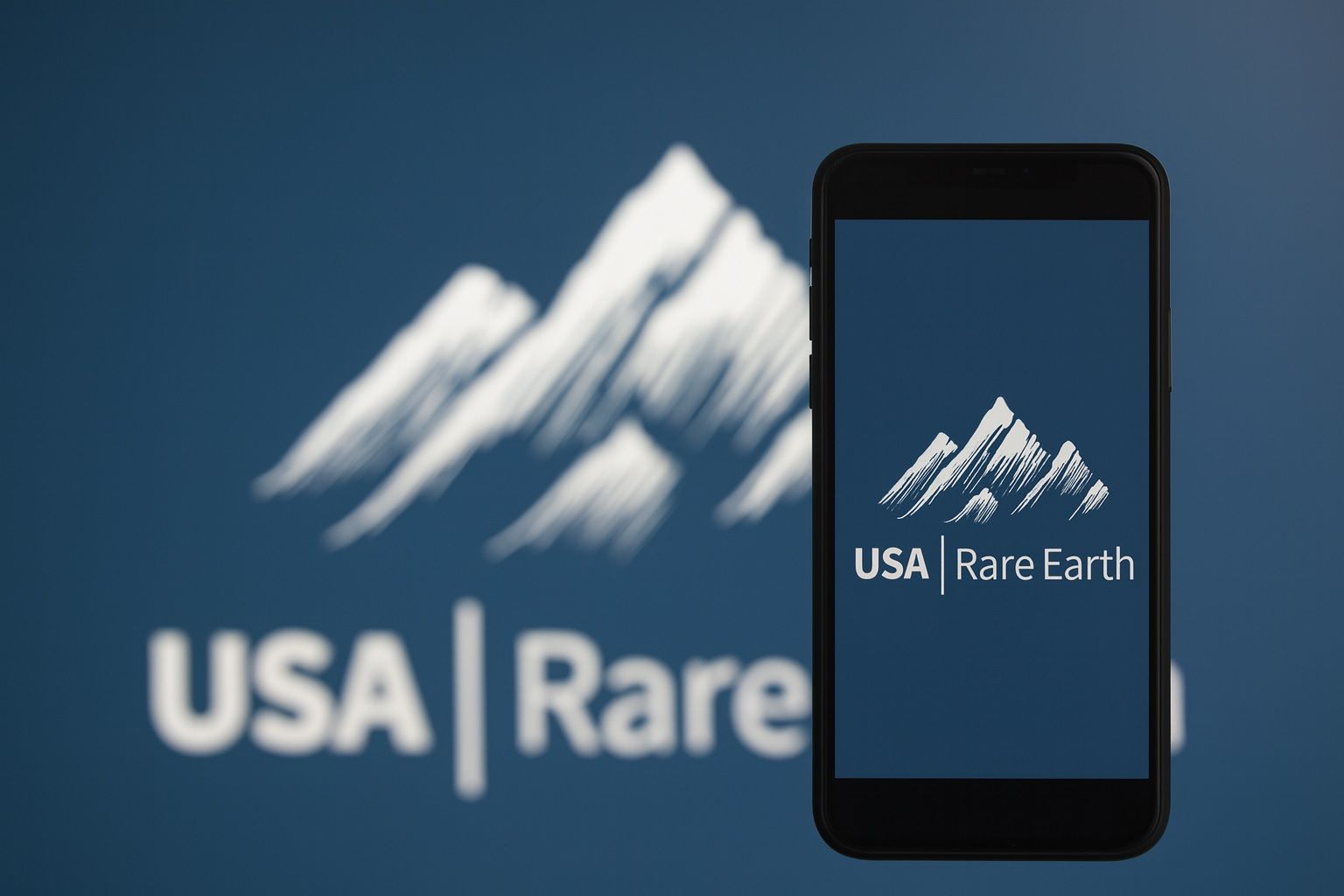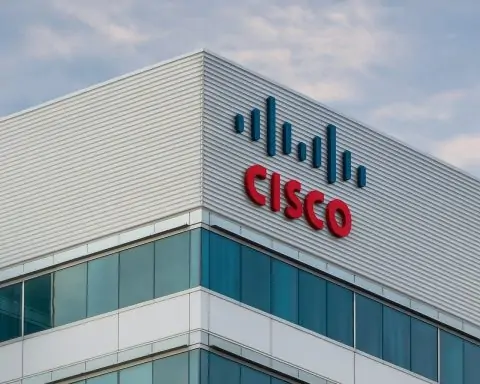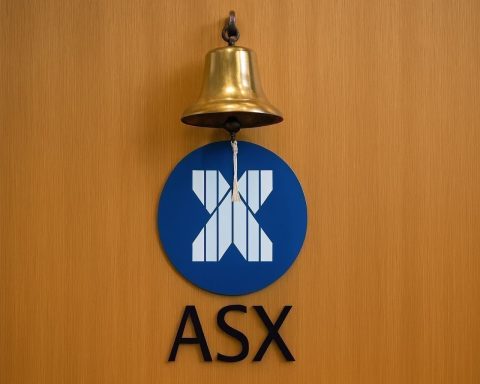- Mine-to-Magnet Strategy: USA Rare Earth (Nasdaq: USAR) is building a fully domestic rare-earth supply chain – from mining the Round Top heavy-REE deposit in Texas (15 of 17 rare-earth elements, including dysprosium/terbium) to refining metals and manufacturing permanent magnets in an Oklahoma plant [1] [2].
- 2025 Stock Surge: After going public via an SPAC in March 2025 (~$10/share), USAR’s stock has exploded ~+120% year-to-date. It hit all-time highs in early October (~$37.85 intraday on Oct 10) and closed around $32.61 on Oct 13, 2025 [3] [4]. For perspective, USAR traded near $5–6 in Q1 2025 [5]. Its market cap is now roughly $2.6–3.3 billion [6], despite the company still being pre-revenue.
- Key Catalysts: Major news drove the rally: CEO Change & White House Talks – new CEO Barbara Humpton (ex-Siemens USA) joined Oct 1, 2025, and publicly revealed USAR is in “close communication” with the White House on critical minerals [7] (sparking speculation of federal support). Strategic Acquisition – USAR agreed to acquire UK magnet alloys producer Less Common Metals (LCM) for $100 M cash + stock [8] [9]. LCM is one of the only non-Chinese facilities making rare-earth magnet alloys, filling a critical supply-chain gap [10] [11].
- Financial Snapshot: USAR has no product revenue yet. In Q2 2025 it reported a GAAP net loss of ~$142.7 M (mostly SPAC-related charges) [12]. Adjusted cash burn is modest (~$5–8 M/quarter) [13]. As of June 30, 2025, cash was ~$121.8 M with no debt [14] (much of which will be spent on the LCM deal). A “going concern” note in filings warns that new funding will likely be needed [15]. Until the mine and plant are online (expected ~2026–27), USAR will continue burning cash without sales.
- Analyst Sentiment: Wall Street is optimistic but cautious. Consensus ratings are generally Buy/Strong Buy given USAR’s strategic role [16]. However, 12-month price targets (typically in the $15–$22 range) lag the current stock price [17]. For example, Canaccord Genuity (Buy) raised its target to $22 [18] and Cantor Fitzgerald to $20 [19] (pre-October). More recently Roth Capital doubled its target to $40 [20], reflecting heightened optimism. Other models show wide variance (e.g. average target ~$26, range ~$15–$40 [21] [22]), underscoring uncertainty.
- Rare-Earth Market: Demand for rare-earth magnets (used in EVs, wind turbines, electronics, defense) is booming – U.S. neodymium magnet needs could rise ~5× by 2030 [23]. But supply is dominated by China (~90–95% of processing) [24]. Recent Chinese export curbs (adding elements to export controls) have jolted markets [25], prompting U.S. policymakers to invest in domestic production. USAR is one of a few U.S. contenders (others include MP Materials – backed by the U.S. govt – and Australia’s Lynas). Acquiring LCM gives USAR a unique edge over Western rivals (Lynas, Neo Performance) by covering the full rare-earth value chain [26].
- Investor Sentiment: Trading volumes have surged ~2–3× normal in early Oct, signaling frenzied interest [27]. Both retail and institutional investors seem attracted by the “first mover” story in domestic magnet supply. Social/trading forums have buzzed with USAR, though some analysts warn the stock looks richly valued on fundamentals. The swingy stock has seen multiple double-digit-day moves on news, reflecting a speculative, momentum-driven market.
- Technical Notes: USAR’s chart shows a steep uptrend with high volatility. It recently traded near its 52-week high (~$34.73) [28]. Technical indicators warn of short-term overbought conditions (e.g. 14-day RSI ~81 [29]), suggesting possible pullbacks. A 20-day SMA (~$19.6) trails the price, reflecting the parabolic rise [30]. In sum, the chart is bullish, but traders note the risk of sharp retracements.
- Valuation Outlook: Traditional metrics are not meaningful (negative EPS, no sales), so investors price in future potential [31]. With the stock near historical highs, analysts emphasize execution milestones: getting the Round Top mine into production and the Oklahoma magnet plant online. If USAR can secure government contracts or investment (as speculated), it could justify lofty multiples. However, risks include project delays, cost overruns, permitting hurdles, and the need for additional capital.
1. Company Overview: USAR’s Mine-to-Magnet Strategy
USA Rare Earth, Inc. (Nasdaq: USAR) is a development-stage critical minerals company aimed at creating a fully domestic rare-earth supply chain. Its flagship asset is the Round Top Mountain deposit in West Texas (via a JV with Texas Mineral Resources) [32], a polymetallic site rich in light and heavy rare-earth elements (including dysprosium and terbium). USAR announced in early 2025 that it produced its first sample of 99%-plus dysprosium oxide from Round Top ore [33], demonstrating its ability to extract high-value heavy-REEs domestically.
Downstream, USAR is building a neodymium-iron-boron (NdFeB) magnet factory in Stillwater, Oklahoma [34]. This plant (budgeted ~$100M) is designed to produce ~5,000 tonnes of high-performance permanent magnets per year once fully operational (H1 2026 target) [35]. USAR has already manufactured pilot batches of neodymium magnets (early 2025) [36], confirming its production know-how. The company’s model is “mine-to-magnet” vertical integration [37] [38]: mining ore, processing it into metals (accelerated by the LCM acquisition), then forging final magnets for EVs, wind turbines, defense systems, and electronics – all in the U.S.
Leadership bolsters this strategy. In October 2025 USAR hired Barbara Humpton (former CEO of Siemens USA) as its new CEO [39]. Humpton’s expertise in large industrial projects and government relations is seen as a sign that USAR is serious about scaling up and working with U.S. authorities [40]. Her message has been clear: the U.S. “needs its own [rare earth] supply chain” rather than relying on imports [41].
2. Stock Price & Recent Performance (as of Oct 13, 2025)
USAR’s stock has been a 2025 standout. After debuting near $10 in March (via a SPAC merger), it languished in the single digits through summer. Starting late September, buyers piled in and the stock soared: by Oct 3 it jumped ~18% to ~$26 [42], and by Oct 7 it traded as high as ~$30.92 intraday [43]. On Oct 3 Reuters reported USAR hit a record high (shares up >18%) after CEO Humpton’s CNBC interview [44] [45].
As of market close Oct 13, 2025, USAR was at $32.61 [46]. Its 52-week range is $5.56–$37.85 [47]. Thus the stock is now roughly 6× its low, giving a market cap on the order of $3 billion [48] [49]. Trading volumes have surged (often 2–3× normal on jump-days) [50], reflecting intense retail and institutional interest. This rally far outpaces broader markets (S&P 500 up only modestly YTD). Even so, the stock has seen sharp swings: it dipped after an August insider sale [51] and on August quarter-end losses, but the overall trend is strongly up.
3. Latest News & Developments
USAR’s share price run has been news-driven. Less Common Metals (LCM) Acquisition: On Sep 29, 2025 USAR announced it would acquire LCM (UK-based rare-earth alloys producer) for $100 M cash plus 6.74 M USAR shares [52] [53]. LCM’s 67,000-ft² English plant makes light and heavy RE magnet alloys (e.g. NdPr, DyTb, samarium-cobalt). Acquiring LCM instantly gives USAR proven metal-processing capability – a “bold and transformative leap” per Chairman Michael Blitzer [54] – and “the only proven ex-China” supply of samarium-cobalt alloys [55]. The market applauded: USAR stock jumped ~25–30% into early October following the news [56] [57]. The deal is expected to close in late 2025 (subject to FDI review).
Leadership Update: Barbara Humpton’s appointment as CEO (effective Oct 1, 2025) was announced in Q3. Humpton is known for navigating big industrial projects and liaising with government (former Siemens USA head). Industry media noted this signals USAR’s intent to “scale up and navigate government partnerships” [58]. She replaced founder Josh Ballard (who led the SPAC), allowing him to focus elsewhere within the company.
Round Top and Operations: USAR continues to advance its projects. Its official investor deck and press releases (e.g. Sep 2025 presentations) highlight construction progress at Stillwater and drilling/permitting at Round Top. In Q3, USA Rare Earth reported successful production of ultra-pure dysprosium oxide from Round Top ore [59], a milestone in heavy-REE processing. (No formal mining yet; permits and feasibility studies are ongoing.) USAR remains pre-revenue; its main value driver is these developmental milestones.
Other News: Earlier in 2025, USA Rare Earth merged with Inflection Point Acquisition Corp. II and began trading on Nasdaq in mid-March [60]. Management has held discussions with potential partners, but no public offtake deals have been announced beyond the LCM deal. A related development: global rare-earth tension news (e.g. China’s export controls on Oct 9 [61]) has boosted the sector broadly, indirectly benefiting USAR.
4. Expert Analysis & Commentary
Analysts and industry experts emphasize USAR’s strategic importance and the risks of hype. U.S. Strategic Shift: Benchmark Mineral Intelligence analyst Neha Mukherjee comments, “If the U.S. and its allies want supply chain security, they must build independent value chains from mine to magnet” [62]. This underscores why companies like USAR are in focus. Indeed, executives see USAR as a “homegrown solution” to reduce reliance on China [63].
Industry Voices: Subash Chandra of Benchmark Co. (in Reuters) notes USAR is “one of the more significant emerging U.S. neo magnet manufacturers,” but he cautions there’s still a “missing piece to the mines-to-magnet strategy” [64] (implying USAR must execute fully to complete that chain). USA Rare Earth chairman Michael Blitzer calls the LCM deal a “bold and transformative leap” for the domestic rare-earth industry [65], enabling “rare earth metal making in the U.S. for the first time in decades.” These quotes reflect optimism about USAR’s potential.
On valuation, analysts in general appreciate USAR’s mission but note stretched valuations. Investopedia and TS2 reports cite analysts urging caution: Wall Street’s 12-month targets ($15–$22) are now well below market, meaning earnings and execution must catch up to justify prices [66]. Some independent research has issued “sell” warnings, labeling the stock as possibly overheated relative to fundamentals [67].
Magnet Market Experts: Bank of America research (cited by TS2) projects U.S. neodymium magnet demand could rise five-fold by 2030 [68], a bullish sign for any magnet-maker. However, many industry voices (e.g. consultancy Wood Mackenzie, Citi) have noted global rare-earth supply remains tight and China-dominated, meaning all players like USAR face intense technical and market challenges.
5. Market Context: Rare Earths & Competition
The rare-earth element market is driven by clean-energy and defense trends. Magnets made from neodymium, praseodymium, dysprosium, etc. are essential for electric vehicles, wind turbines, consumer electronics, and military systems [69] [70]. China still produces ~90% of refined rare earths and magnet components [71]. In 2025, Beijing expanded export controls on key REs [72], triggering supply fears worldwide. The U.S. government has responded by using emergency powers and taking stakes in mining companies (e.g. DoE took 5% of Lithium Americas, DoD took a large stake in MP Materials [73] [74]) to encourage domestic supply.
Key Players/Competitors:
- MP Materials (NYSE: MP): Operates the U.S.’s only large rare-earth mine (Mountain Pass, CA) and has partnered with defense/industry (DoD now a top shareholder). MP primarily supplies separated rare-earth carbonate and co-produces some magnets (not yet heavy-REE alloys). It has its own multi-year deals (e.g. $500M Apple agreement) but still relies on foreign feedstock for some alloys.
- Lynas Rare Earths (ASX: LYC): Australia’s Lynas has emerged as the largest ex-China RE miner/processor. Lynas opened a heavy-REE separation plant in Malaysia (2023) and is planning a processing site in Texas. Lynas also formed a JV (Neo Performance Materials) for magnets with Rio Tinto and others. Unlike USAR, Lynas’s magnet-making JV is overseas, so USAR claims a unique fully-U.S.-based chain [75].
- Neo Performance Materials (TSX: NEO; formerly Magnequench): A Western firm (China-backed) that produces some rare-earth magnets and alloys, but it does not cover the full range of heavy-REE alloy production like LCM/USAR will [76].
- Others: Junior companies (NioCorp in Canada, Energy Fuels in U.S.) are developing parts of the chain (e.g. NioCorp has a magnet project, Energy Fuels has some RE carbonate). No one besides USAR claims the full integrated “mine-to-magnet” path in the U.S. at scale.
Overall, USA Rare Earth is positioning itself at the front of a nascent U.S. REE supply chain. As TS2 notes, the LCM acquisition “leapfrogs” many Western competitors by filling a major processing gap [77]. Analysts and experts agree that breaking China’s dominance requires such vertically integrated players – but execution risk is very high.
6. Institutional & Retail Investor Sentiment
Investor appetite for USAR has been frenzied. Trading data shows volumes spiking to 2–3× normal levels during news-driven rallies [78]. Both institutional funds and retail traders have accumulated shares amid the “rare-earth mania” backdrop. Sentiment indicators (e.g. analyst ratings) skew bullish: as noted, consensus is Buy/Strong Buy, and new funds/ETFs (particularly those focusing on clean energy or critical minerals) reportedly took initial positions in Q3. On social media and trading forums, USAR has trended as a “meme” play on strategic resources.
However, some caution is evident. An August 2025 insider sale (CEO/Chairman sold shares) reminded investors of risk-taking at prior prices [79]. No new institutional block purchases (e.g. from large mutual funds) have been publicly reported post-SPAC, so the holder base is still forming. In summary, sentiment is highly optimistic right now, but the stock’s volatility means both exuberance and apprehension coexist.
7. Technical Analysis & Chart Trends
Technically, USAR’s chart shows a sharp breakout. In mid-2025 the stock formed a base near $6–10, then in late September broke out above $10 on heavy volume. The ensuing rally was parabolic: within ~2 weeks, USAR climbed past $30 (over 200% gains). Recently (early Oct) it traded near its 52-week high ($34.73 [80]).
Key indicators (per GuruFocus data): the 14-day RSI is ~81 (on Oct 10) [81], signaling an overbought condition. The 20-day moving average is much lower (~$19.6 [82]), highlighting the steep rise. Such momentum suggests a strong trend, but also raises the risk of profit-taking. Some chart analysts caution that USAR may form a short-term pullback (or consolidation) after this run. On the upside, potential resistance lies near the record high of $37.85. Given the stock’s dramatic moves, traders watch for clear technical triggers – e.g. a break back below major moving averages – before calling a top.
8. Fundamental Analysis: Financials, Partnerships, Risks
USA Rare Earth is still a development-stage company. Its recent financials (Q2 2025):
- Revenue: $0 (no product sales yet) [83].
- Net Loss: $142.7 M GAAP in Q2 (driven by SPAC merger accounting); adjusted operating loss ~$7.8 M [84]. Burn rate is roughly $5–8 M/quarter on R&D, salaries, construction.
- Cash/Balance Sheet: ~$121.8 M cash as of June 30, 2025 [85]; no debt. Post-LCM, cash will drop significantly (~$20–40M pro forma) [86]. A going-concern note was included, a typical warning for pre-revenue firms expecting future financing needs [87].
- Liquidity: Strong current ratio (cash far exceeds liabilities), but future capital raises are likely. The stock’s high price gives the option to issue equity at rich valuations if needed.
- Offtake & Partners: USAR’s long-term plan depends on offtake deals (e.g. with automakers or defense) or government contracts. So far it has not announced any binding offtake or JV partners in the U.S. beyond the Texas Mineral JV. The LCM acquisition itself provides an immediate Euro customer and partial revenue base. Future partnerships could be forthcoming, but none are confirmed publicly yet.
- Risks: High execution and regulatory risk. Developing a mine and building a high-tech factory are capital-intensive and time-consuming. Permitting hurdles (especially for heavy-REE mining), construction delays, cost overruns or technical setbacks could postpone production. Market risk: REE prices can be volatile (China’s policy can spike or dampen prices). USAR also faces financing risk – if cash runs low before key milestones, it may need to issue more stock (dilution). Lastly, competition: if rivals like Lynas or MP scale faster, USAR’s market window could shrink.
Analysts project modest early revenue (e.g. ~$45–50M in 2026 when the plant ramps [88]), with profitability (EPS turning positive) closer to 2027–2028 after steady magnet sales. Until then, fundamental metrics (P/E, P/S) are not meaningful. Instead, investors focus on milestone execution, cost control, and securing funding or contracts.
9. Price Forecasts & Outlook
Price forecasts for USAR vary wildly. Before the October surge, most 12-month targets were in the teens to low-20s. For example, Canaccord Genuity (Buy) recently set a $22 target [89], Cantor Fitzgerald $20 [90], Benchmark Co. $15 [91]. (These targets assumed slower growth; USAR’s late-2025 rally has outstripped those models.) By Oct 10, 2025, Roth Capital doubled its target to $40 [92], reflecting “heightened optimism” after management progress. MarketBeat reports a street-average target around $26 (high ~$40, low ~$15 from 4 analysts).
Given the stock’s recent run, nearly all forecasts (except Roth’s) are now below the current price. Some analysts have begun adjusting their outlooks: TradingView data shows a consensus ~$24 (max $40) [93]. Zacks and other aggregators similarly list average targets in the high teens to mid-20s. In plain terms, most forecasts expect some pullback or consolidation from these highs.
The prevailing stock outlook depends on catalysts: if USAR can secure government funding/contracts (mirroring MP Materials’ DoD deal) or major industry offtakes, many believe the stock could justify a multibillion valuation. Absent that, skeptics warn the surge may be “speculative fervor” beyond fundamentals [94] [95]. Investors considering USAR must weigh the bullish narrative (break China’s grip, huge demand growth) against the caution that execution risk is high and current price embeds very optimistic assumptions.
Sources: Company filings and press releases; TS2.Tech analysis [96] [97] [98]; Reuters [99] [100]; Mining.com [101]; Investopedia [102]; industry reports (Benchmark Minerals, Bank of America) [103]; financial media (Investing.com [104], GuruFocus [105], etc.). All information is current as of mid-Oct 2025.
References
1. ts2.tech, 2. ts2.tech, 3. ts2.tech, 4. www.reuters.com, 5. ts2.tech, 6. ts2.tech, 7. ts2.tech, 8. ts2.tech, 9. www.mining.com, 10. ts2.tech, 11. www.mining.com, 12. ts2.tech, 13. ts2.tech, 14. ts2.tech, 15. ts2.tech, 16. ts2.tech, 17. ts2.tech, 18. www.investing.com, 19. www.investing.com, 20. www.gurufocus.com, 21. www.gurufocus.com, 22. www.investing.com, 23. ts2.tech, 24. ts2.tech, 25. www.reuters.com, 26. ts2.tech, 27. ts2.tech, 28. www.gurufocus.com, 29. www.gurufocus.com, 30. www.gurufocus.com, 31. ts2.tech, 32. ts2.tech, 33. ts2.tech, 34. ts2.tech, 35. ts2.tech, 36. ts2.tech, 37. ts2.tech, 38. ts2.tech, 39. ts2.tech, 40. ts2.tech, 41. ts2.tech, 42. ts2.tech, 43. ts2.tech, 44. www.reuters.com, 45. ts2.tech, 46. www.reuters.com, 47. www.reuters.com, 48. ts2.tech, 49. www.reuters.com, 50. ts2.tech, 51. ts2.tech, 52. www.mining.com, 53. agmetalminer.com, 54. www.mining.com, 55. www.mining.com, 56. ts2.tech, 57. www.mining.com, 58. ts2.tech, 59. ts2.tech, 60. ts2.tech, 61. www.reuters.com, 62. www.reuters.com, 63. ts2.tech, 64. www.reuters.com, 65. www.mining.com, 66. ts2.tech, 67. ts2.tech, 68. ts2.tech, 69. ts2.tech, 70. ts2.tech, 71. ts2.tech, 72. www.reuters.com, 73. www.reuters.com, 74. www.reuters.com, 75. ts2.tech, 76. ts2.tech, 77. ts2.tech, 78. ts2.tech, 79. ts2.tech, 80. www.gurufocus.com, 81. www.gurufocus.com, 82. www.gurufocus.com, 83. ts2.tech, 84. ts2.tech, 85. ts2.tech, 86. ts2.tech, 87. ts2.tech, 88. ts2.tech, 89. www.investing.com, 90. www.investing.com, 91. www.investing.com, 92. www.gurufocus.com, 93. www.marketbeat.com, 94. ts2.tech, 95. ts2.tech, 96. ts2.tech, 97. ts2.tech, 98. ts2.tech, 99. www.reuters.com, 100. www.reuters.com, 101. www.mining.com, 102. www.investopedia.com, 103. ts2.tech, 104. www.investing.com, 105. www.gurufocus.com









